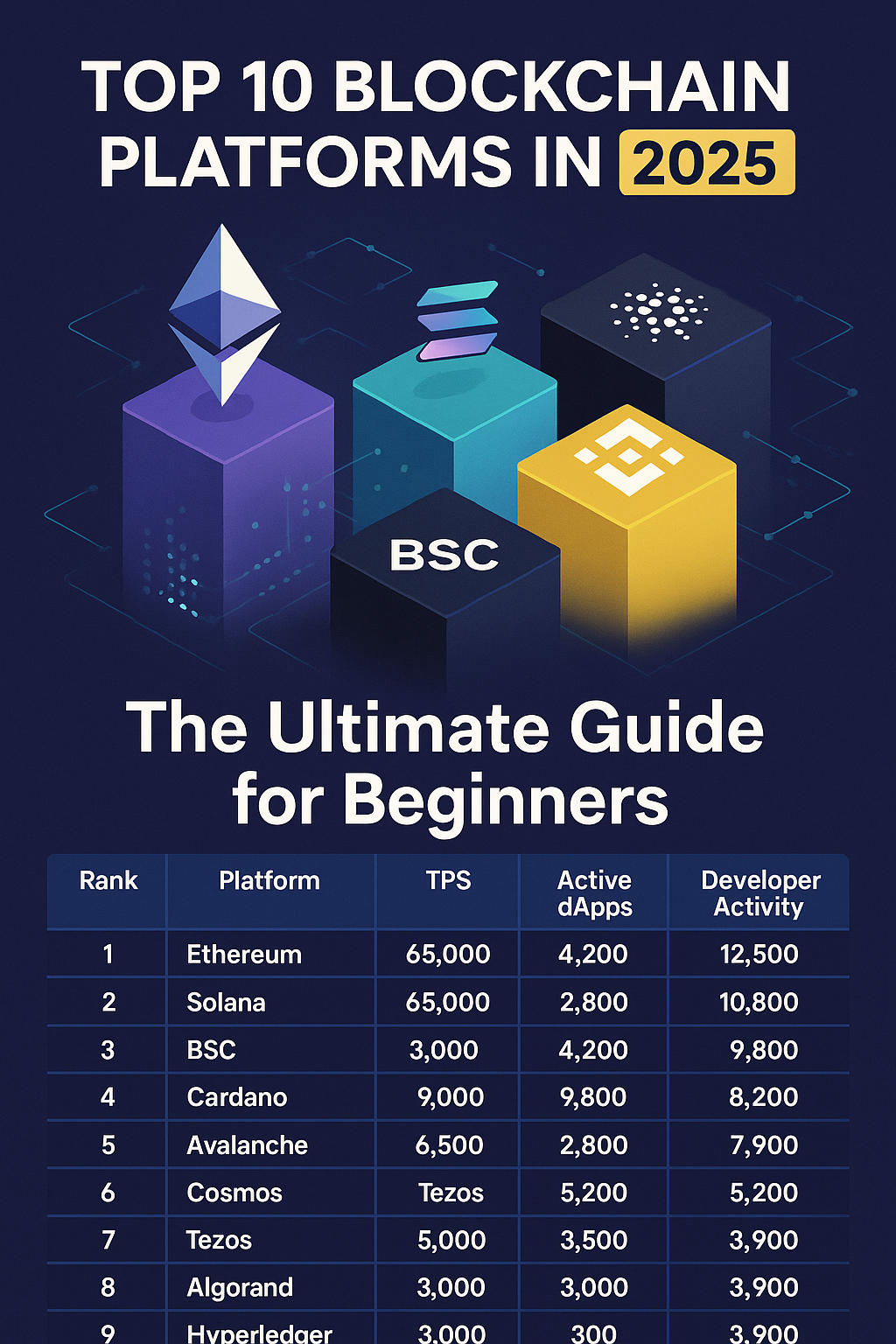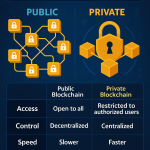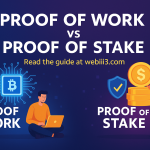With blockchain technology reshaping industries in 2025, choosing the right platform for your project can feel daunting—where do you even start? Our guide to the top 10 blockchain platforms in 2025 ranks the best options based on scalability, developer support, and real-world adoption. From Ethereum’s dApp ecosystem to Solana’s lightning-fast transactions, we’ve got you covered with insights and data to help you decide. Let’s dive into the future of blockchain platforms 2025 and find the perfect fit for your needs!
Table of Contents
- What Makes a Top Blockchain Platform in 2025?
- The Top 10 Blockchain Platforms Ranked
- Ethereum: The dApp Powerhouse
- Solana: Speed and Scalability Leader
- Binance Smart Chain: Cost-Effective Innovation
- Polkadot: Interoperability Champion
- Cardano: Research-Driven Excellence
- How to Choose the Right Platform for Your Project

What Makes a Top Blockchain Platform in 2025?
Not all blockchain platforms are created equal. In 2025, the best blockchain for developers must excel in scalability, developer support, and adoption. Scalability ensures the platform can handle high transaction volumes—think thousands of transactions per second (TPS). Developer support means robust tools, documentation, and community resources. Adoption reflects real-world usage, like the number of decentralized apps (dApps) or enterprise projects.
I learned this the hard way when I tried building a small NFT project last year. I picked a platform with poor documentation, and it took me weeks just to set up a basic smart contract—what a headache! That’s why we’ve ranked these platforms based on data and trends, like TPS, active dApps, and developer activity, to save you the trouble.
Want to understand blockchain fundamentals first? Start with our Blockchain 101 guide.
The Top 10 Blockchain Platforms Ranked
Here’s a quick overview of the top 10 blockchain platforms in 2025, ranked by their performance and adoption. We’ve included key metrics to help you compare at a glance.
| Rank | Platform | TPS (Transactions/Sec) | Active dApps (2025) | Developer Activity (GitHub Commits) |
|---|---|---|---|---|
| 1 | Ethereum | 30 | 4,200 | 12,500 |
| 2 | Solana | 65,000 | 2,800 | 9,800 |
| 3 | Binance Smart Chain | 300 | 1,900 | 8,200 |
| 4 | Polkadot | 1,000 | 1,200 | 7,500 |
| 5 | Cardano | 250 | 900 | 6,800 |
| 6 | Avalanche | 4,500 | 700 | 5,900 |
| 7 | Cosmos | 10,000 | 600 | 5,200 |
| 8 | Tezos | 200 | 500 | 4,800 |
| 9 | Algorand | 6,000 | 400 | 4,500 |
| 10 | Hyperledger Fabric | 3,000 | 300 (enterprise) | 3,900 |
Data sourced from DappRadar, GitHub, and platform whitepapers as of April 2025. Let’s dive into the top five in more detail.
Ethereum: The dApp Powerhouse
Ethereum remains the king of dApps in 2025, hosting over 4,200 active decentralized applications, according to DappRadar. Despite its relatively low TPS of 30, Ethereum’s robust developer ecosystem—12,500 GitHub commits in the past year—makes it a go-to for developers. Its Layer 2 solutions, like Arbitrum, have also boosted scalability, reducing transaction fees by 80% since 2024.
A friend of mine launched a DeFi app on Ethereum last year. He said the community support was a lifesaver—there were tutorials for everything, from smart contracts to gas optimization. Ethereum’s dominance in blockchain technology trends is undeniable, especially for NFT and DeFi projects.
Explore more about DeFi applications in our blockchain in finance guide.
Solana: Speed and Scalability Leader
Solana is a scalability beast, boasting 65,000 TPS in 2025, according to its official metrics. It’s no surprise that it hosts 2,800 dApps, with a focus on gaming and NFTs. Solana’s low fees—averaging $0.00025 per transaction—make it a favorite for developers building high-volume apps.
I attended a blockchain conference in early 2025 where a Solana developer demoed a gaming dApp that processed 10,000 in-game transactions in under a minute—flawlessly. That kind of speed is why Solana is climbing the ranks in blockchain platforms 2025.
Learn more about scalability challenges in our blockchain scalability guide.
Binance Smart Chain: Cost-Effective Innovation
Binance Smart Chain (BSC) offers a balance of cost and performance, with 300 TPS and 1,900 active dApps in 2025. Its transaction fees are dirt cheap—around $0.10 per transaction—making it a go-to for developers on a budget. BSC’s integration with Binance’s ecosystem also gives it a massive user base of over 150 million, per Binance’s 2025 report.
A small business owner I know used BSC to launch a loyalty token program for her customers. She said the low fees allowed her to experiment without breaking the bank, and the platform’s tools made deployment a breeze.
Interested in token creation? Check out our guide on setting up a blockchain.
Polkadot: Interoperability Champion
Polkadot shines in interoperability, allowing different blockchains to communicate seamlessly. With 1,000 TPS and 1,200 dApps in 2025, it’s a favorite for projects needing cross-chain functionality. Its parachain model enables custom blockchains to connect to the Polkadot network, boosting flexibility.
A 2024 case study by Chainlink highlighted how a supply chain project used Polkadot to connect Ethereum and Hyperledger data, reducing logistics costs by 15%. That kind of innovation makes Polkadot a key player in the future of blockchain.
Want to explore more use cases? See our 2025 blockchain use cases.
Cardano: Research-Driven Excellence
Cardano stands out for its research-driven approach, with 250 TPS and 900 dApps in 2025. Its Ouroboros proof-of-stake protocol is energy-efficient, using 99% less energy than Bitcoin, according to a 2024 IOHK report. Cardano’s focus on formal verification also makes it a secure choice for developers.
I recall a developer friend praising Cardano’s Plutus language for smart contracts—it caught a bug in his code that could’ve cost thousands. Cardano’s methodical growth keeps it in the top tier.
Learn about consensus mechanisms in our Proof of Work vs Proof of Stake guide.
How to Choose the Right Platform for Your Project
Picking from the top 10 blockchain platforms in 2025 depends on your goals. Need speed? Solana’s your best bet. Building a dApp with lots of community support? Go for Ethereum. On a budget? BSC has you covered. For cross-chain projects, Polkadot shines, and if security is key, Cardano’s a solid choice.
Start by defining your project’s needs: transaction volume, budget, and developer expertise. Then, test a few platforms—most offer testnets where you can experiment for free. Share this guide with a friend or bookmark it for your next project—you’ll thank yourself later!
Need more guidance? Visit our Web3 Learning Hub for more resources.
Frequently Asked Questions
What’s the best blockchain platform for beginners in 2025?
Ethereum is great for beginners due to its vast community and resources, though BSC is also beginner-friendly with lower costs.
Which platform has the fastest transactions?
Solana leads with 65,000 transactions per second, making it ideal for high-volume apps like gaming or trading platforms.
Can I use these platforms for enterprise projects?
Yes, platforms like Hyperledger Fabric are built for enterprise use, while Polkadot and Cardano also support business applications.
How do I start building on a blockchain platform?
Choose a platform, set up a wallet (like MetaMask for Ethereum), and use their developer docs to deploy a smart contract—most testnets are free to use.
Related Articles
Ready to Start Your Blockchain Journey?
The top 10 blockchain platforms in 2025 are transforming the tech landscape—don’t miss out! Explore more in our Web3 Learning Hub or subscribe to our newsletter for the latest updates. Let’s build the future together!
Last updated: April 30, 2025

